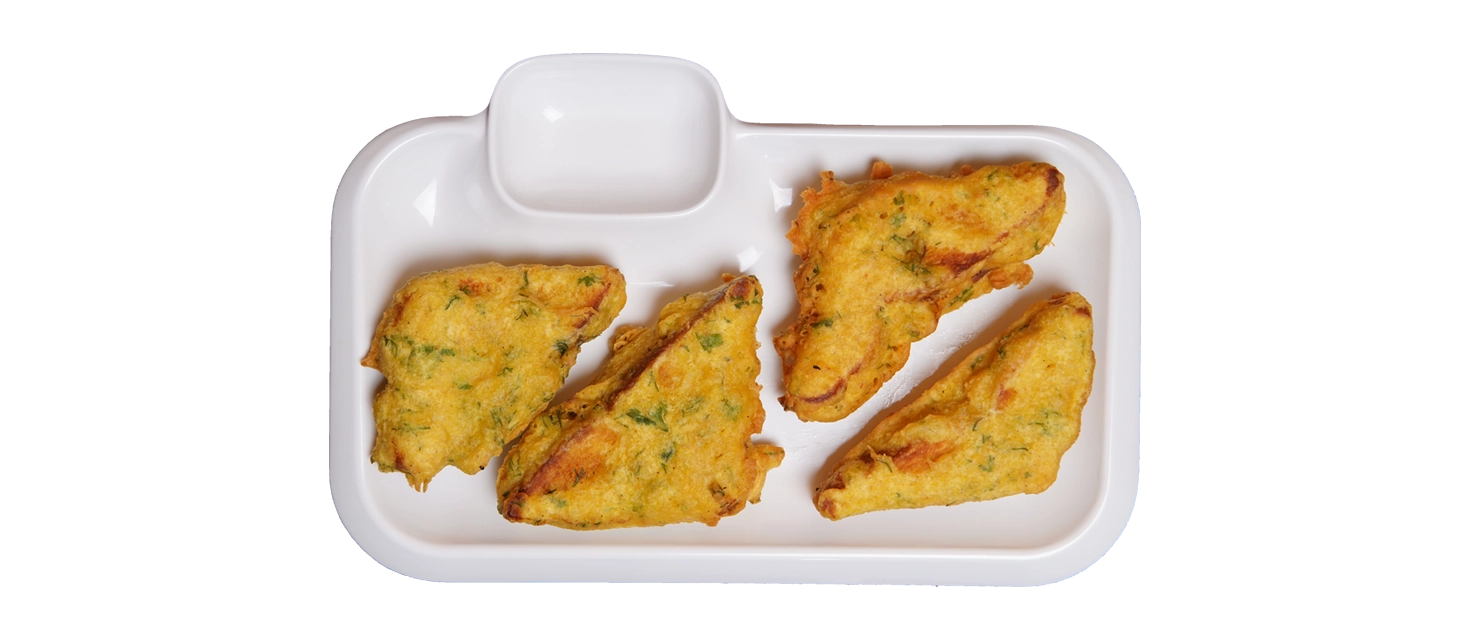
Bread Pakoda
TSh 6,000
Bread pakoda is a popular Indian street food and snack made by deep-frying bread slices coated in a spiced gram flour (besan) batter. This crispy and flavorful dish is enjoyed across India as a delicious tea-time snack or as part of a light meal.
To prepare bread pakoda, you’ll start by making a thick batter using gram flour (besan) along with spices such as turmeric powder, red chili powder, cumin seeds, ajwain (carom seeds), and salt. The batter is mixed with water to form a smooth and thick consistency.
Slices of bread are then dipped into the besan batter, ensuring they are well-coated on both sides. The coated bread slices are carefully placed into hot oil and deep-fried until they turn golden brown and crispy.
The key to delicious bread pakoda lies in the flavorful batter, which infuses the bread slices with spices and a crispy texture when fried. Some variations of bread pakoda include stuffing the bread slices with a spiced mashed potato filling before coating them with the batter.
Once fried to perfection, bread pakodas are typically served hot and crispy, often accompanied by mint chutney or tamarind chutney for dipping. They can be enjoyed as a snack on their own or paired with a hot cup of masala chai for a delightful tea-time treat.
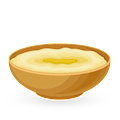
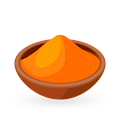


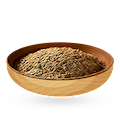

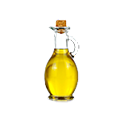
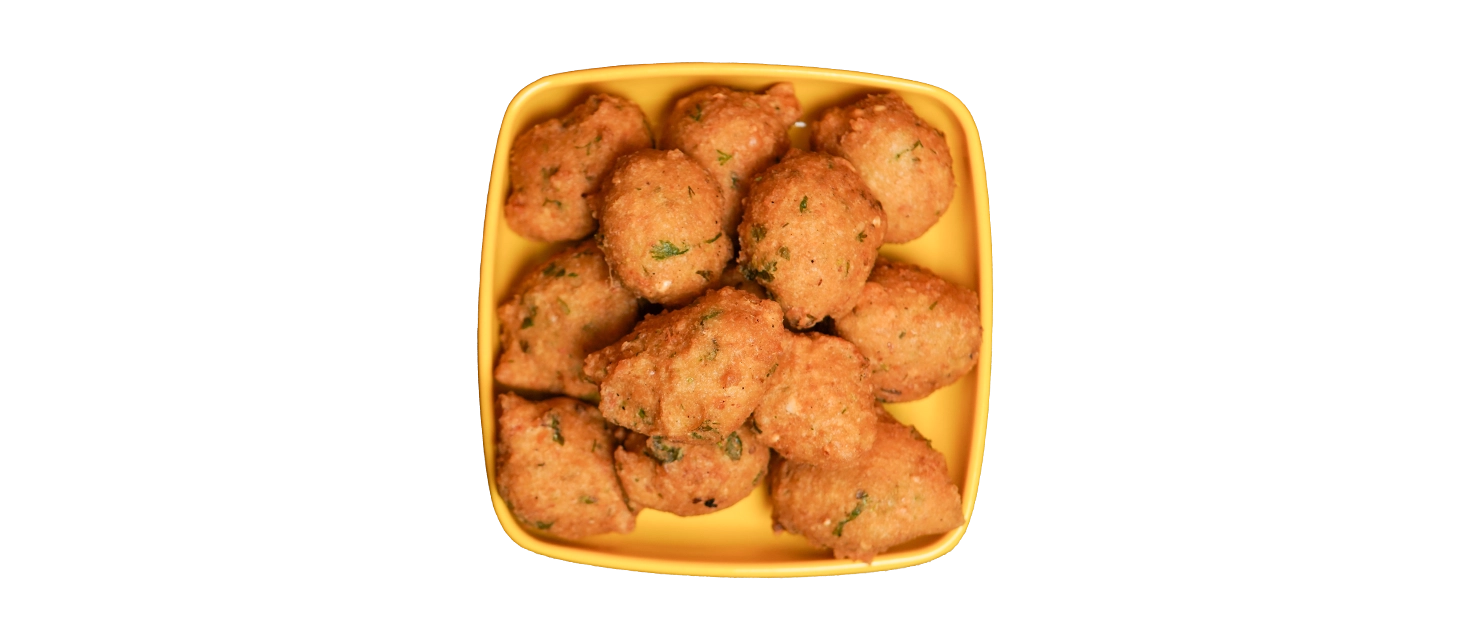
Daal Bhajia
TSh 6,000
Daal bhajia is a savory and crispy Indian snack made from a batter of ground lentils (daal) seasoned with spices, onions, and herbs, then deep-fried until golden and crunchy. It’s a popular street food in India, enjoyed for its delicious flavor and satisfying texture.
To prepare daal bhajia, you’ll start by soaking split yellow lentils (chana dal) or split chickpea lentils (moong dal) in water for a few hours. The soaked lentils are then drained and ground into a coarse paste along with ginger, green chilies, and spices such as cumin seeds, turmeric powder, and coriander powder.
Chopped onions, fresh cilantro (coriander) leaves, and sometimes grated carrots are added to the lentil paste to enhance flavor and texture. The batter is seasoned with salt and a pinch of baking soda to help achieve a light and crispy texture when fried.
To make daal bhajia, small portions of the batter are dropped into hot oil using a spoon or hands, forming irregularly shaped fritters. They are fried until they turn golden brown and crispy on the outside while remaining soft and flavorful on the inside.
Daal bhajia is typically served hot, accompanied by green chutney or tamarind chutney for dipping. It makes a wonderful appetizer or tea-time snack, perfect for sharing with family and friends.
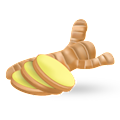










Kachori
TSh 5,000
Kachori is a spicy Indian snack shaped like a round flattened ball, consisting of a flour-based shell with different fillings. The most popular filling consists of yellow moong dal, besan flour, pepper, chili powder, cumin seeds, and other spices.
Kachori is most popular in Indian states such as Rajasthan, Maharashtra, Gujarat, Uttar Pradesh, and Punjab. The snack has numerous variations in each state, so dried fruits, nuts, and coconut are sometimes added to kachori in order to enhance its flavors.
In Delhi, it is typically served with curd, tamarind chutney, and onion rings.
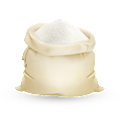
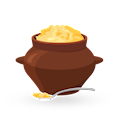


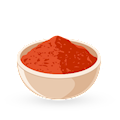




Maru Bhajia
TSh 6,000
Maru Bhajia is a delightful East African snack that has its roots in Indian cuisine, particularly from the Gujarat region. It’s a popular street food item in Kenya and Tanzania, known for its crispy texture and flavorful taste.
The history of Maru Bhajia reflects the cultural exchange between Indian and East African culinary traditions, brought over by Indian migrants to the region. Over time, this snack has become a beloved part of East African street food culture.
Maru Bhajia is made from sliced potatoes that are coated in a spiced chickpea flour batter before being deep-fried to perfection. The batter is seasoned with a blend of spices such as turmeric, chili powder, cumin seeds, and ajwain (carom seeds), giving the bhajias their distinct flavor profile.
The key to achieving the crispy texture of Maru Bhajia lies in the batter, which is prepared by mixing chickpea flour (besan) with water and spices to form a smooth, thick consistency. The potato slices are then dipped into this batter and fried until golden brown and crispy.
Maru Bhajia is often served hot and fresh, accompanied by tangy tamarind chutney or a zesty green chutney for dipping. It’s a delightful snack that’s perfect for enjoying on its own or as part of a larger meal.







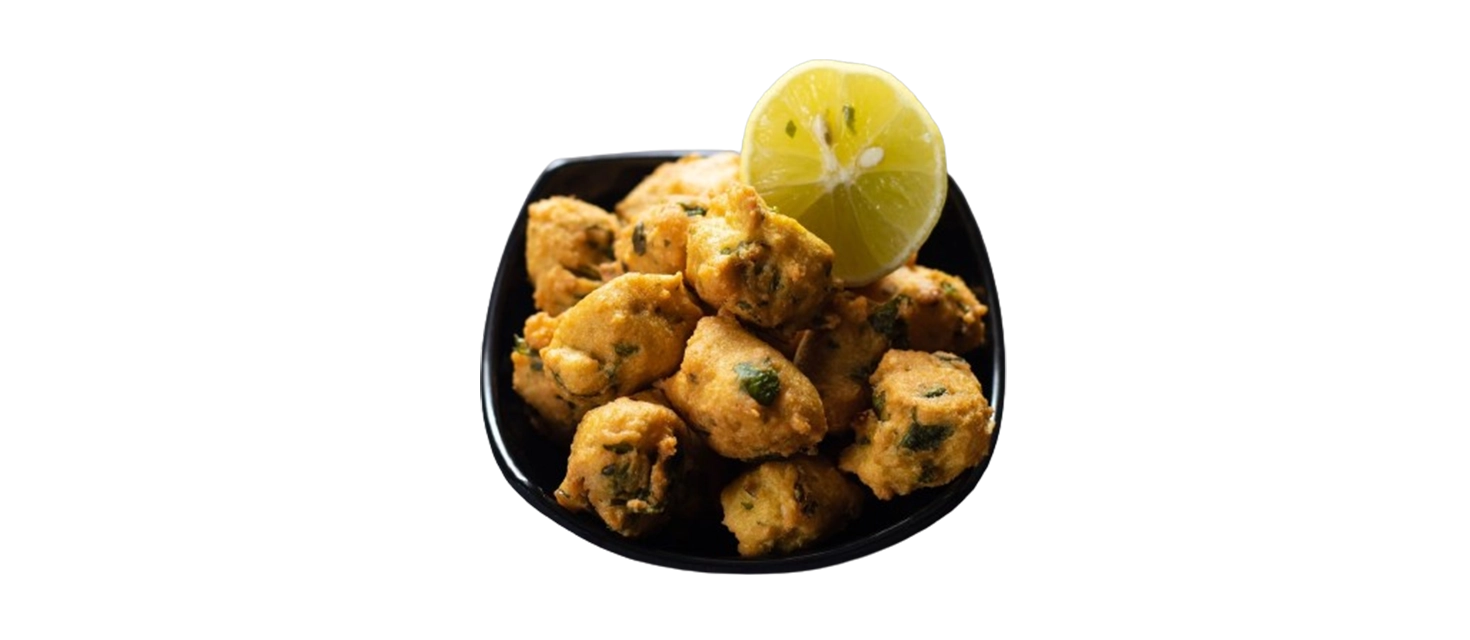
Methi Pakoda
TSh 5,000
Methi na gota is a traditional Indian snack originating from Gujarat. These savory fried balls are usually made with a combination of gram flour, fenugreek, hot peppers, coriander, carom seeds (ajwain), lime juice, asafoetida, baking soda, salt, pepper, sugar, and oil.
Once prepared, the batter is dropped into hot oil, piece by piece, until it’s golden brown on all sides. Methi na gota is typically served piping hot with fried hot peppers and chutneys on the side. This snack is especially popular during winter and the monsoon season.
If properly prepared, it should be soft and fluffy on the inside.





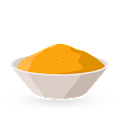



Onion Ring Fritters
TSh 6,000
Onion ring fritters are a delicious and crispy snack made from thinly sliced onions coated in a flavorful batter and deep-fried to golden perfection. These fritters are popular as an appetizer or side dish, enjoyed for their crunchy texture and savory taste.
To prepare onion ring fritters, you’ll start by slicing onions into rings and separating them. The batter is made using a combination of all-purpose flour (or cornflour), along with spices such as paprika, garlic powder, salt, and pepper. The batter is thinned with water or beer to achieve a smooth consistency that coats the onion rings well.
Once the batter is ready, each onion ring is dipped into the batter to coat it thoroughly. Then, the coated onion rings are carefully lowered into hot oil and fried until they turn crispy and golden brown. The high heat of the oil cooks the onions inside while creating a crisp and crunchy exterior.
Onion ring fritters are best served hot, either on their own or with a dipping sauce such as ketchup, ranch dressing, or aioli. They make a great snack for parties, game nights, or as a side dish with burgers or sandwiches.





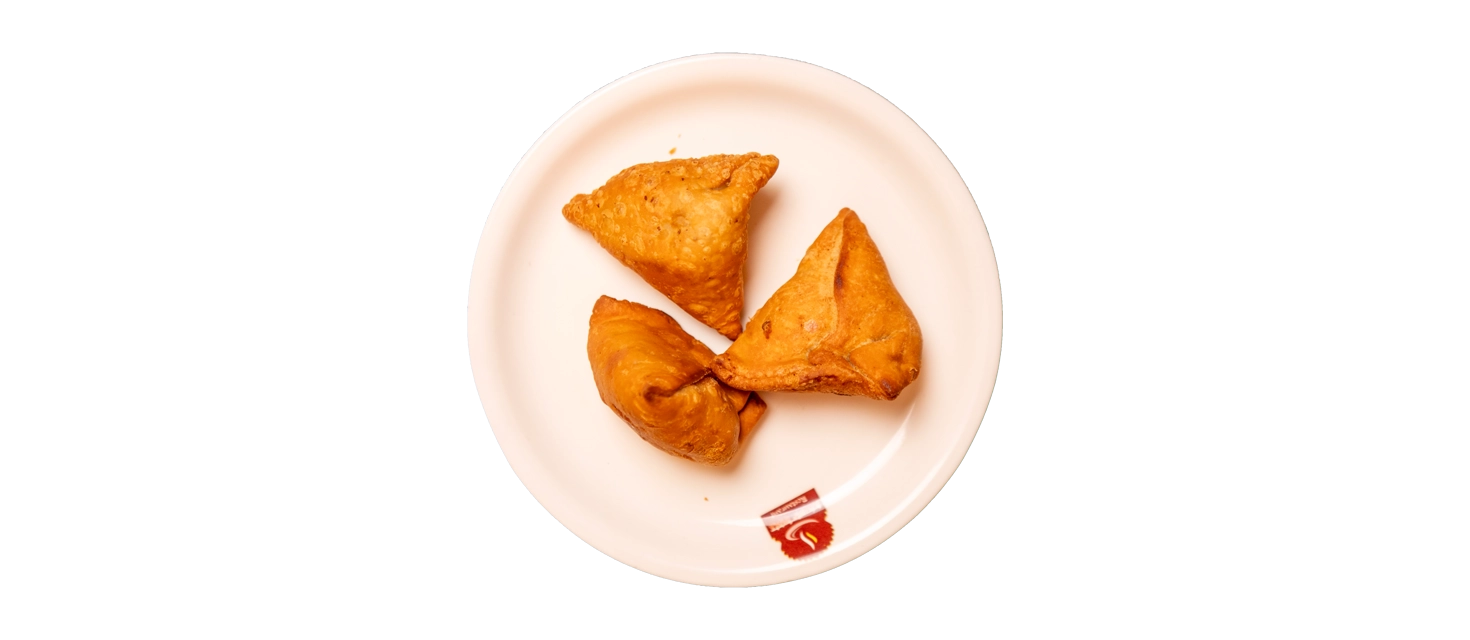
Punjabi Samosa
TSh 5,000
Punjabi samosa is a popular savory snack that originated in the Punjab region of India. It is a triangular-shaped pastry filled with a spiced mixture of potatoes, peas, and sometimes lentils or minced meat, all enclosed in a crispy, golden-brown crust.
The history of Punjabi samosas can be traced back centuries, evolving from the traditional Indian practice of preparing stuffed pastries. Over time, the samosa became especially beloved in Punjab, where it gained widespread popularity as a street food and a must-have item during festive occasions and gatherings.
The filling of Punjabi samosas is seasoned with a blend of aromatic spices such as cumin, coriander, turmeric, garam masala, and sometimes green chilies for a hint of heat. This flavorful mixture is enveloped in a thin layer of dough made from flour, water, and a touch of oil, then deep-fried until crispy and irresistibly crunchy.
Punjabi samosas are typically served hot, accompanied by tamarind chutney or mint chutney for dipping, adding a burst of tangy and refreshing flavor to every bite.










Vegetable Samosa
TSh 5,000
Vegetable samosa is a popular Indian snack characterized by its crispy, triangular pastry shell filled with a savory mixture of spiced vegetables. This delightful treat is enjoyed throughout India and around the world, offering a delicious combination of flavors and textures.
The history of vegetable samosas can be traced back to ancient times, with variations of filled pastries existing in many cultures. In India, samosas gained prominence as a beloved street food and a staple at special occasions and celebrations.
The filling for vegetable samosas typically includes a medley of finely chopped or grated vegetables such as potatoes, peas, carrots, and sometimes cauliflower. These vegetables are sautéed with a blend of aromatic spices such as cumin, coriander, turmeric, garam masala, and chili powder to create a flavorful and satisfying mixture.
The pastry shell is made from a simple dough of all-purpose flour, water, and a bit of oil, rolled out thin and then folded around the vegetable filling into a triangular shape. The samosas are then deep-fried until golden and crispy, resulting in a mouthwatering snack that’s perfect for dipping in tangy tamarind or mint chutney.









We believe in feeding the body and nourishing the soul with wholesome vegetarian fare
Our family is committed to preparing your meals with the freshest ingredients that are healthy and safe to eat.

